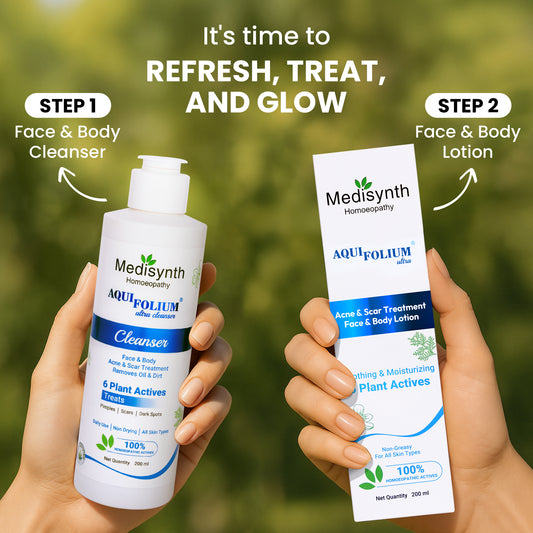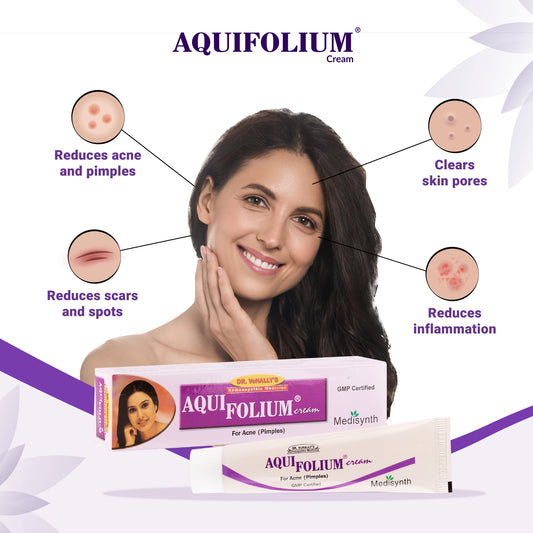The Best Homeopathic Treatments for Monsoon Fungal Infections

The monsoon is a beautiful season. The mysterious atmosphere and the fresh scent of rain hitting the ground add to the season’s charm. As serene and calming as the season is, it is also the ideal environment for funguses to grow. Fungal infections can be distasteful if not taken care of at the earliest. They easily spread and cause extreme discomfort. So how do we take care of ourselves in this season of pitter-patter rain and microbes? So let’s find out about how to treat fungal infections naturally to keep your season fun and easy.
Understanding Common Causes for Monsoon Fungal Infections
Fungal infections are more common during the rainy season due to the environmental conditions that promote the growth and spread of fungi. These infections can affect the skin, nails, and other parts of the body, leading to various symptoms like itching, redness, and inflammation. Here's a breakdown of the common causes for fungal infections during the monsoon:
1. Increased Humidity and Moisture
-
The monsoon season brings increased humidity and dampness, creating the ideal environment for fungi to thrive. Fungi thrive in warm, moist conditions, and high humidity levels during the rainy season increase the likelihood of fungal infections, especially in areas where the skin remains damp.
2. Excessive Sweating
-
Due to the humidity, people tend to sweat more, and areas such as the feet, groin, and underarms remain wet for longer periods. This can cause fungal growth in these areas, leading to infections like athlete's foot (tinea pedis) and jock itch (tinea cruris).
3. Wet Clothing and Footwear
-
Wet clothes and shoes, especially if they’re not dried properly, provide an environment for fungal spores to grow. Wearing damp clothing or shoes for long hours creates a perfect breeding ground for fungi, which can lead to skin and nail infections.
4. Poor Ventilation
-
The rainy season often leads to less sun exposure and poor ventilation in homes and public spaces. This limits the natural drying of damp areas, allowing fungi to proliferate. Additionally, moisture can accumulate in closed or poorly ventilated areas, encouraging fungal growth.
5. Skin-to-Skin Contact
-
Fungal infections like ringworm are highly contagious and can spread through direct skin-to-skin contact. In the monsoon season, when people tend to stay indoors more, close contact with others increases the risk of spreading these infections.
6. Weakened Immune System
-
The monsoon season can also bring about seasonal illnesses like colds and flu, which can weaken the immune system. A weakened immune system can make individuals more susceptible to fungal infections.
7. Pre-existing Skin Conditions
-
People with pre-existing skin conditions like eczema, psoriasis, or acne are more prone to fungal infections. These conditions may compromise the skin’s protective barrier, making it easier for fungi to enter and cause infections.
Common Types of Fungal Infections During the Monsoon:
-
Athlete’s Foot (Tinea Pedis): A common fungal infection that affects the feet, causing itching, redness, and scaling.
-
Ringworm (Tinea Corporis): A skin infection characterized by round, red, itchy patches with raised edges.
-
Candidiasis: An overgrowth of yeast in areas like the groin, armpits, or mouth, especially in moist environments.
-
Jock Itch (Tinea Cruris): Fungal infection in the groin area, often caused by sweating and wearing damp clothing.
Prevention Tips:
-
Keep Skin Dry: Regularly dry skin, especially in areas prone to moisture like the feet, armpits, and groin.
-
Wear Breathable Fabrics: Choose clothes made of breathable materials like cotton that allow air circulation.
-
Foot Hygiene: Wash and dry your feet properly, and avoid wearing wet shoes. Consider using antifungal powder to keep feet dry.
-
Proper Ventilation: Ensure good air circulation in living spaces, and dry damp clothes and shoes quickly.
-
Use Antifungal Creams: Apply antifungal creams or powders if you have a tendency to develop fungal infections.
Best Homeopathic treatment for Fungal Problems
Medisynth Ringoment Anti-fungal Cream
Most of us get scared thinking of the treatments for fungal diseases because of how uncomfortable the procedures feel. But thanks to the latest advancement in homeopathy, you can go for the Ringoment anti-fungal cream which feels light on the skin and does not contribute to any irritation. Ringoment anti-fungal cream gives visible results within a few days of use. It can clear wounds and reduce inflammation in the infected area. The cream is made up of natural antiseptic and antifungal ingredients that kill the germs and help healthy tissues to grow back easily.
Common Homeopathic Remedies for Monsoon Fungal Infections
Ringoment fungal cream has become such a huge success because it is a concoction made up of all the right ingredients. Six amazing homoeopathic and naturopathic solutions are listed below:
-
Syzygium Jambolanum It helps relieve violent itching of the skin. It is also useful to treat old ulcers of the skin & diabetic ulceration of the skin.
-
Calendula Officinalis One of the most popular multi-use homeopathic remedies for skin ailments, Calendula is used for wound healing as an Antiseptic agent.
-
Hamamelis Virginica The extract from this plant has been used for ages for acne, scallops, and skin inflammations, and also as a Homoeopathic treatment to relieve soreness & burning of skin. It is widely used as one of the most popular homeopathic remedies for skin infections, especially in Europe and the USA. It is also traditionally referred to as Witch Hazel.
-
Echinacea Angustifolia Traditionally an immune system booster, the liquid extract of this plant is popularly used as homoeopathic medicine for cleansing & antiseptic wash.
-
Azadirachta Indica Popularly known as neem, the extracts from this plant have antiseptic & astringent properties. It is highly versatile and is one of the popular homoeopathic remedies for ringworm.
-
Chrysarobinum This is an important ingredient in most homoeopathic medicines and ointments for the skin. It is highly versatile and is used in the treatment of tinea or ringworm. It also soothes, and takes care of eruptions on the neck, face, and scalp. It is very popularly used as a homoeopathic cure for jock itch, as well as other such infections.
Conclusion
Taking care of your body is your priority as an individual. Skin infections during monsoon are very common, and sometimes it might not even be in your hand. But it is your job to take proper care of your body. It varies from basic hygiene and cleaning your surroundings, to applying the proper skin treatments and remedies. In case of a skin infection, get it instantly checked by the doctor. Microbial growths spread quickly if not properly treated. Even if you think that it is a small infection, a doctor is a better judge. There are several homoeopathic solutions for monsoon skin problems and also home remedies. So take care of yourself and have an amazing monsoon season.









